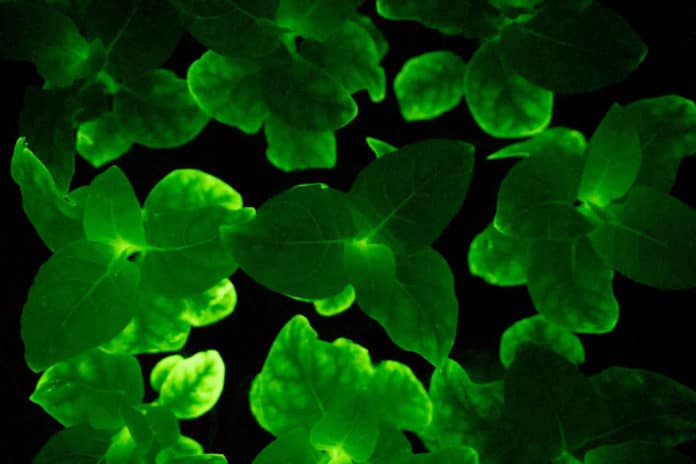Bioluminescence found in certain mushrooms is metabolically like the natural procedures common among plants.
By embeddings DNA acquired from such mushroom, scientists from the MRC London Institute of Medical Sciences have created plants that glow a lot brighter than beforehand conceivable. Plants containing the mushroom DNA glow continuously throughout their lifecycle, from seedling to maturity.
Dr. Keith Wood, CEO of Light Bio, stated, “the plants can produce over a billion photons per minute. Thirty years ago, I helped to create the first luminescent plant using a gene from fireflies. These new plants can produce a much brighter and more steady glow, which is fully embodied within their genetic code.”
In this study, scientists reported that mushroom bioluminescence works particularly well in plants. This enabled them to create glowing plants that are ten times brighter than the previous one.
They used ordinary cameras and smartphones to record green illumination emitted by the leaves, stems, roots, and flowers. What’s more, this bioluminescence doesn’t found to harm the health of the plants.
Even though mushrooms are not firmly related to plants, their light emission centers on an organic molecule that is likewise required in plants for making cell walls. This molecule, called caffeic corrosive, delivers light through a metabolic cycle, including four enzymes. Two catalysts convert the caffeic corrosive into a luminescent precursor, which is then oxidized by a third enzyme to deliver a photon. The last enzyme converts over the oxidized molecule back to caffeic acid to begin the cycle once more.
In plants, caffeic acid is a building block of lignin, helps gives mechanical strength to the cell walls. It is in this manner part of the lignocellulose biomass of plants, which is the most abundant sustainable asset on Earth. As a key segment of plant metabolism, caffeic acid is additionally vital to numerous other essential mixes associated with colors, aromas, antioxidants, etc.
By connecting light creation to this essential atom, the glow radiated by the plants gives an internal metabolic indicator. It can uncover the physiological status of the plants and their responses to nature. For example, the glow increases drastically when a ripe banana skin is placed nearby. Younger parts of the plants will in general, sparkle most brilliantly, and the blossoms are especially glowing. Flickering patterns or waves of light are often visible, revealing active behaviors within the plants that usually would be hidden.
The research was carried out principally through a collaboration between Planta, a biotech startup in Moscow, the Institute of Bioorganic Chemistry of the Russian Academy of Sciences, MRC London Institute of Medical Sciences, and the Institute of Science and Technology Austria. Financial support was provided by Planta, the Skolkovo Foundation, and the Russian Science Foundation.
Journal Reference:
- Tatiana Mitiouchkina, Plants with genetically encoded autoluminescence. DOI: 10.1038/s41587-020-0500-9
